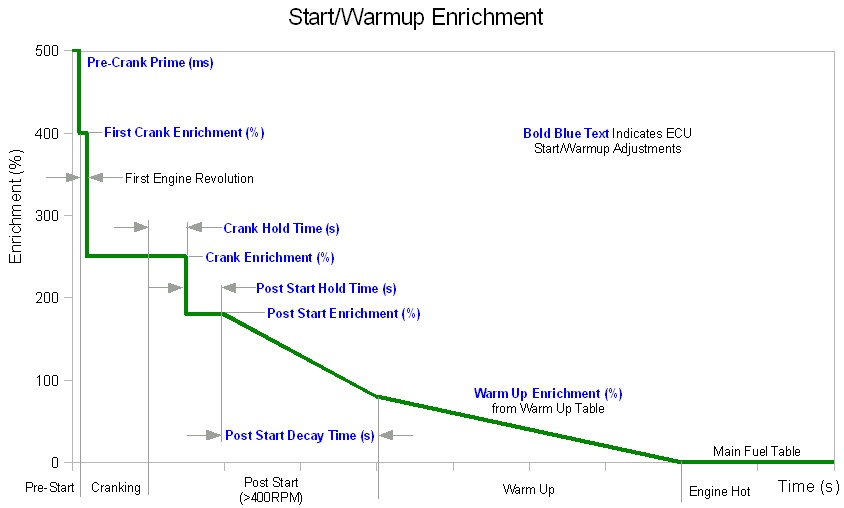Cold engines require significantly more fuel (enrichment) than warm engines, this is primarily due to the fact that the injected fuel condenses on the walls of the inlet tract and therefore does not make it to the cylinders.
As soon as the engine speed exceeds 400 RPM, the crank enrichment enters it's hold time state and once the crank enrichment hold time has passed enrichment is provided by the Post-Start Enrichment function. The Post-Start enrichment value will be fixed for a set length of time (set by the Hold Time). After the Hold Time has elapsed, the post-start enrichment will decrease linearly until it reaches the value set by the Warm-Up Enrichment. The length of time that this decrease takes is set by the Decay Time. At the end of this decay the Post-Start Enrichment will turn off and the Warm-Up Enrichment will be the only engine coolant temperature enrichment remaining active.
The Post Start Enrichment Table can be set to either 2D or 3D. When set to 2D the x (horizontal) axis is set to ECT and the table increments every 10ºC. When set to 3D both the x and y table axis are configurable, this is useful for more complex setups particularly when needing to support multiple fuel types. Linear Interpolation is used between each cell to calculate the correct amount of enrichment when the axis values are between the cell centres. The green cell indicates the currently active cell.
The current post-start enrichment value is displayed on the Fuel tab of the Runtime Values Window (F12 key).
Note: There are four engine coolant temperature dependant functions which provide enrichment. These are Pre-Start Prime, Crank Enrichment, Post-Start Enrichment and Warm-Up Enrichment. As a general rule, the correct Post-Start Enrichment value will be lower than the Crank Enrichment but higher than the Warm-up Enrichment.
If the current Post-Start Enrichment value (based on engine coolant temperature) is the same value as that of Warm-up Enrichment the Post-Start Enrichment will be skipped as it is not necessary.



